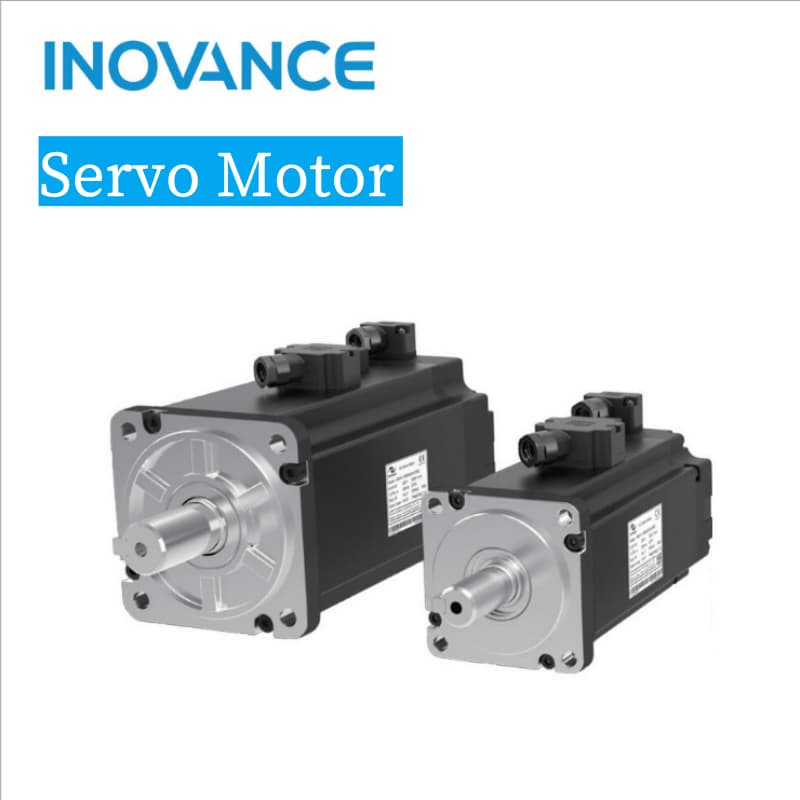Status and Role:
In modern industrial automation, servo motors are the "precise brain" of mechanical movement. As the core execution component of the servo system, they achieve high-precision control of mechanical movement through real-time feedback and dynamic adjustments.

Working Principle:
The servo system acts according to the command instructions, with sensors installed on the motor and the controlled object machine. The detection results are returned to the servo amplifier for comparison with the instruction value. The servo motor is controlled by feedback signals, which differs from the input pulse signal control of stepper motors.
Performance Characteristics:
It can precisely control speed and position, converting voltage signals into torque and rotational speed to drive the controlled object.
The rotor speed is controlled by input signals and can respond quickly, with small electromechanical time constants, high linearity, and low starting voltage.
The speed can be controlled precisely, with a wide range of speed control, enabling stable, smooth constant-speed operation. Speed can be changed at any time, and stability is maintained even at very low speeds. It can quickly reverse and accelerate/decelerate, with brief static and dynamic transition times, maintaining position even with external forces applied. It generates high torque instantly within the rated capacity range and has high output power and efficiency.
Classification:
Divided into two main categories: DC and AC servo motors. The main characteristic is that there is no rotation phenomenon when the signal voltage is zero, and the speed decreases steadily as torque increases.
Encoder of the Servo Motor Function:
The encoder is a crucial component of the servo motor, used to sense the rotation of the motor and feedback signals to the driver. The driver compares the feedback value with the target value to adjust the rotor's rotation angle. The precision of the servo motor depends on the precision of the encoder.
Classification and Features:
◻ Incremental Encoder:
Converts displacement into periodic electrical signals, which are then transformed into counting pulses, indicating the size of displacement by the number of pulses.
The disadvantage is when the encoder does not move or loses power; it relies on internal memory of counting devices to remember the position. It cannot move after a power failure, and when power is restored, it cannot lose pulses; otherwise, the counting device’s memory zero point will shift, leading to inaccurate positioning. The solution is to add reference points and find them before each operation, including zeroing upon startup.
◻ Absolute Encoder:
Each position corresponds to a definite digital code, and the indication is only related to the starting and ending measurement positions, independent of the intermediate process.
The code disk has many graduation lines, and by reading the light and dark states of each graduation line, a unique binary code (Gray code) is obtained, referred to as an n-bit absolute encoder. It is determined by the mechanical position of the code disk and is not affected by power failures or interference. There is no need to memorize, seek reference points, or continuously count. It has strong anti-interference characteristics, high data reliability, and positioning accuracy superior to incremental encoders, and is increasingly applied in servo motors.
Due to its high precision and multiple output digits, it is generally selected for serial output or bus-type output, which is relatively expensive.
Application:
The aforementioned features determine the safety and reliability characteristics of servo motors, making them suitable for applications with safety requirements. These include wind turbine pitch control systems, port machinery synchronized positioning, lifting machinery, construction machinery (tower cranes), elevators, engineering machinery, steel metallurgy, petrochemicals, hydropower, medical equipment radar cannon rotation devices, solar tracking rotation devices, as well as large industrial robots in fields such as heavy industry, nuclear industry, and automotive manufacturing.

With the development of the stage industry, the demands for precision, reliability, and response speed in stage machinery have become increasingly high. The characteristics of absolute value servo motors, such as high-precision position feedback, rapid response, and anti-interference capability, can effectively meet the needs of stage machinery in complex performance scenarios. This includes precise control of stage lifting, sliding, and rotation, ensuring the smoothness and safety of performances. Since 2018, YZ DITECH has applied absolute servo motor to stage machinery, driving the development of servo motors in the stage machinery industry.

Summary:
Servo motors play a significant role in the field of industrial automation due to their high precision control, rapid response, and stable performance. Encoders, especially absolute encoders, as their key components, provide strong assurance for the precise control of servo motors with their unique advantages, promoting industrial automation to a higher level of development.